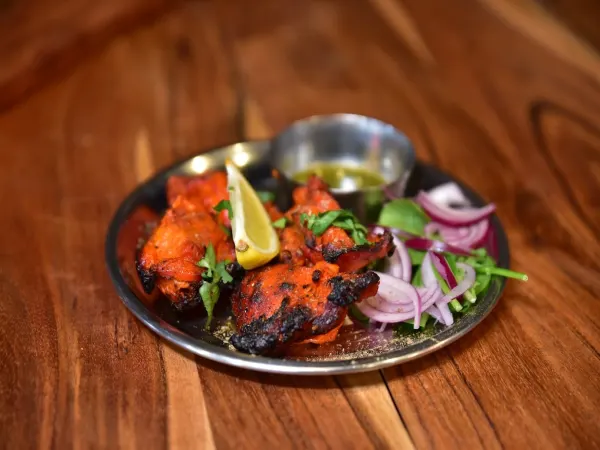Royal Kitchen Secrets: How the Courts of Punjab Influenced Modern Cuisine | Patiala Shahi Restaurant
Picture this: a grand palace in ancient Punjab, its air scented with saffron, roasted cumin, and simmering ghee. Courtiers gather beneath gold-lit chandeliers, waiting for royal chefs to unveil dishes fit for kings. Those kitchens weren’t just places to cook; they were temples of flavour, blending art, skill, and devotion.
Today, when you bite into a creamy butter chicken or a smoky tandoori roti, you’re tasting centuries of culinary evolution. This story uncovers how Punjab’s royal kitchens shaped the world’s understanding of rich, soulful Indian cuisine and why those traditions still matter in 2025.
The Shahi Beginning: Where Heritage Met Innovation
Punjab’s royal courts, especially in Patiala, were legendary for their feasts. The chefs there were culinary artists who fused Mughal refinement with local farming traditions. Meals weren’t just nourishment; they were statements of pride, prosperity, and artistry.
These chefs perfected the balance of flavour layering cardamom, cloves, and cinnamon with fresh cream and clarified butter. They didn’t rush; each dish was slow-cooked, carefully spiced, and beautifully plated. The result? A cuisine that spoke of comfort and grandeur at once, the true definition of “Shahi.”
From Palaces to the People
As royal chefs left palace service, they carried their skills into towns and villages. Some opened roadside dhabas; others trained new generations of cooks. Their recipes evolved, becoming the foundation of what we now call Punjabi cuisine.
Even humble home-cooked dishes dal makhni, saag, or aloo paratha, echo that royal past. What started as meals for kings now fills dinner tables around the world, proving that great food transcends class, time, and borders.
The Power of the Tandoor
Few inventions shaped Indian cuisine like the tandoor. Once used in royal kitchens to roast meats and bake bread, this clay oven revolutionised flavour.
• It sealed juices inside meats while giving a smoky char.
• It made breads soft inside, crisp outside.
• And it gave food a signature aroma of fire, earth, and spice.
Even now, the tandoor remains at the heart of Punjabi cooking. Authentic restaurants continue to use real clay ovens because that’s where the magic lives, a direct connection to centuries of royal tradition.

The Meaning Behind “Shahi” Dishes
When you see dishes like Shahi Paneer or Shahi Kofta, you’re tasting history. “Shahi” translates to “royal,” and these recipes once graced the tables of kings. Their secret lies in richness almonds, cashews, cream, and aromatic spices blended into silky gravies.
The royal touch is found in their details:
1. Slow cooking — no rush, just time and care.
2. Layered flavours — spices unfold gradually, never overpowering.
3. Balanced textures — soft, smooth, and comforting.
4.Visual delight — golden tones, fresh herbs, and a touch of elegance.
Each bite isn’t just food; it’s a memory, a moment of connection to Punjab’s regal past.
Royal Lessons for Modern Kitchens
Even in today’s fast world, the philosophy of royal Punjabi cooking still inspires chefs:
• Respect the ingredient. Freshness always comes first.
• Cook with patience. Time brings depth.
• Serve with heart. Hospitality is the true soul of Punjabi cuisine.
Restaurants that uphold these principles don’t just serve meals, they serve experiences. Every plate tells a story of craftsmanship, love, and culture passed down through generations.
Why Royal Recipes Still Matter
In an age of shortcuts and fast food, royal Punjabi cuisine teaches us to slow down and savour. Each dish reminds us of a time when food was an act of devotion, where care and community were the main ingredients.
Preserving these royal recipes isn’t just about flavour; it’s about keeping tradition alive. Every naan, curry, or kebab cooked with passion keeps Punjab’s royal legacy burning bright.
Conclusion
From the golden kitchens of Patiala’s courts to the bustling restaurants of today, the royal influence of Punjab continues to shape how we eat, share, and celebrate. The secrets of the Shahi kitchen live on through every slow-cooked curry and tandoor-fired bread, connecting the past to the present in the most delicious way possible.
At Patiala Shahi Indian Restaurant, this legacy is more than history; it’s a promise. Every dish honour Punjab’s royal heritage, crafted with authentic spices, warmth, and love. Step in, taste the past reborn, and let every bite remind you why some traditions are meant to last forever.




Leave a Comment
Comments (0)